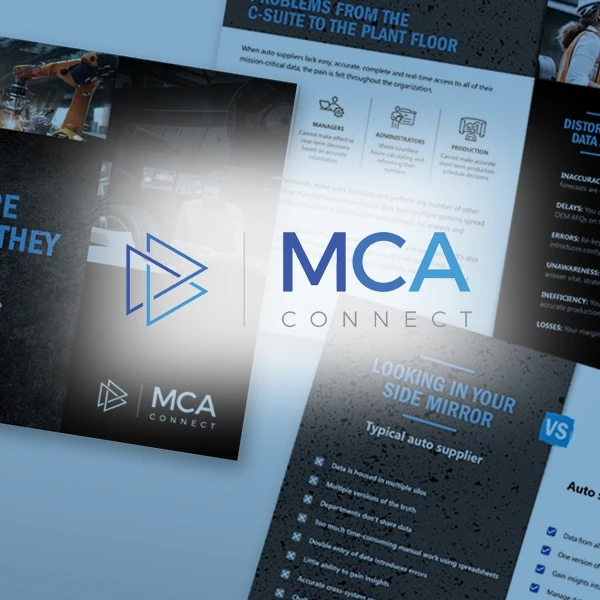For B2B industrial manufacturers, understanding the difference between thought leadership and content marketing is essential for optimizing marketing strategies.
Six Key Ways Thought Leadership Is Different from Content Marketing
For B2B industrial manufacturers, understanding the difference between thought leadership and content marketing is essential for optimizing marketing strategies. While both approaches involve creating and sharing valuable content, their objectives, target audiences and expected outcomes differ significantly. When you recognize these differences, you allocate resources effectively, build credibility, and strengthen your market position.
Defining the Terms
Content marketing focuses on generating leads, nurturing prospects and driving sales through informative content tailored to customer needs. Content marketing involves producing valuable, relevant content to attract and engage a specific target audience (HubSpot). The primary goal is to drive profitable customer action by addressing the audience’s needs and interests. Examples include blog posts, case studies, videos, and social media content that inform and nurture prospects through the buyer’s journey. For industrial manufacturers, this could mean creating how-to guides on equipment maintenance, producing videos demonstrating product applications, or publishing customer success stories that illustrate a product’s value in real-world scenarios
Thought leadership goes beyond the more transactional goals of content marketing, aiming to establish authority and influence with a target audience. By taking a clear stance on challenges, sharing innovative ideas, and contributing to meaningful conversations, thought leaders shape market perspectives and drive long-term brand credibility.
Thought leadership aims to establish a company or individual as an authority within their space. It involves offering unique insights, perspectives and forward-thinking ideas that address broader industry challenges (the hardest thing to do in marketing, by the way, according to Forrester). Instead of focusing on product promotion, thought leaders analyze trends, offer predictions, and propose innovative solutions. Thought leadership often takes the form of whitepapers, keynote speeches, or articles in industry publications that offer actionable guidance (see 12 Thought Leadership Examples in Manufacturing). For instance, a manufacturer might publish a research report analyzing the future of automation in industrial processes, influencing how the sector approaches new technologies.
Here are the six ways that thought leadership is different from content marketing.
1. Purpose: Helping vs. Leading AND Helping
Content marketing exists to be helpful. It educates, informs, and addresses customer pain points by offering practical solutions. By providing the information buyers need at different stages of their journey, content marketing builds trust and moves prospects closer to a purchase decision. For example, a content marketing campaign might include an eBook that explains best practices for maintaining industrial machinery, offering valuable insights while subtly positioning a company’s products as a solution.
Thought leadership, on the other hand, is not just about providing helpful content—it’s also about leading conversations. Thought leaders make bold statements, take positions on industry challenges, and propose visionary ideas. They don’t just join the dialogue—they shape it. Think of an engineer publishing an article predicting the long-term impact of AI on supply chains, for example. That engineer is influencing how other companies prepare for technological disruption.


2. Goals: Sales vs. Influence
The goals of content marketing and thought leadership also diverge. Content marketing is typically measured by its ability to generate leads, nurture prospects and drive conversions. Measurable growth in website traffic, lead form submissions, and engagement rates indicate success.
Thought leadership, by way of contrast, is about building authority, credibility and influence. Success is measured not only by audience engagement, but also by media mentions, invitations to speak at industry events, and the degree to which others reference and apply the leader’s insights. While content marketing drives immediate business results, thought leadership builds long-term brand equity and positions a company as an industry pioneer (RHBlake).

3. Focus: Solutions vs. Ideas
Content marketing zeroes in on specific customer pain points. Its objective is to provide practical solutions and highlight the benefits of products or services. Every blog post, video or case study is designed to solve a specific problem, leading the audience closer to a purchasing decision. For example, a manufacturer might create a detailed comparison guide explaining the advantages of different materials used in industrial applications.
Thought leadership, on the other hand, addresses broader challenges, issues and trends. It often helps reframe how the market thinks about challenges—and which challenges to think about. Rather than focusing on a particular product or service, thought leadership content initiates discussions that influence the direction of their focus area. By offering insights that others find valuable, companies position themselves as credible voices in their field. This is especially vital these days, when 75% of B2B buyers prefer a re—free sales experience (Gartner).


4. Engagement: Prospects vs. Prospects AND Peers
While content marketing is typically targeted at potential customers, thought leadership engages a broader range of stakeholders. Content marketing is effective at guiding buyers through the decision-making process. Blog posts, case studies and email newsletters are strategically crafted to provide the right information at the right time, ultimately encouraging a purchase.
Thought leadership has a different goal. It aims to spark dialogue among industry peers, analysts, media outlets and decision-makers, typically using original research and data. The goal is to shape perceptions and influence the broader industry narrative. Thought leadership content often appears as articles in respected publications, or is delivered from a podium as a keynote address at an industry conference, reaching an audience that includes competitors, regulators and collaborators.
As we discuss in our 2025 Thought Leadership in Manufacturing Report, thought leadership plays a vital role in influencing the purchase of long-sales-cycle offerings in the B2B manufacturing ecosystem.

5. Channels: Simple vs. Complex
Content marketing uses channels that prioritize engagement, reach and the consistent distribution of valuable information to a broad audience. Social media platforms, email newsletters, company blogs, and video content are commonly used to deliver digestible, visually appealing content that nurtures prospects through the buyer’s journey. The bulk of content marketing campaigns strategically repurpose content across multiple channels to maximize visibility and impact.
Thought leadership thrives on channels that allow for in-depth discussions and the clear communication of complex ideas. Industry publications, media interviews, podcasts and conference stages are ideal platforms for thought leaders to establish their authority and provide deep, valuable insights. These channels offer ample space for thought leaders to share detailed perspectives, challenge conventional wisdom, and engage in meaningful conversations. Thought leadership content often includes long-form articles, keynote speeches, and expert panel discussions, all designed to position the speaker or writer as a trusted voice in their field.


6. Measurement: Leads vs. Trust and Market Share
Content marketing success is measured using traditional performance metrics, such as leads, conversion rates, clickthrough rates and ROI. Marketers track how content influences sales and supports the buyer’s journey.
Thought leadership impact is more difficult to quantify in the short term. Metrics such as media mentions, brand perception surveys, and invitations to contribute to industry discussions offer insight into the reach and influence of thought leadership efforts. In some cases, the ultimate measure of success is when competitors and industry experts begin echoing the ideas and perspectives introduced by a thought leader.

Shape the discussion, shape the industry
Understanding the differences between thought leadership and content marketing enables B2B manufacturers to refine their marketing strategies and achieve both short-term and long-term goals. While content marketing drives immediate sales and builds relationships with prospects, thought leadership elevates a company’s reputation and shapes the future of its industry.
By thoughtfully integrating both approaches, companies enhance their market presence, engage diverse audiences, and drive sustainable growth. For personalized guidance on how RH Blake can help you implement an effective thought leadership or content marketing strategy, let’s connect.


"You guys met our expectations in every way. It [RH Blake Market Research] was the information we were looking for. Congratulations and Thank You!"
 Scott Griggs
Scott Griggs
Director of Services for Food Manufacturing and Food Service
ALS Global

"“I’ve gotten all that I’d hoped for from the RH Blake Growth Roadmap™ and more. Based on the research and insights, we adjusted our offering scope and sales approach. And this adjustment has been effective at generating new opportunities."
 Diane Reko
Diane Reko
President
REKO International

"RH Blake has been an outstanding partner. They deliver creativity, on time, and always so professional. We love working with them because of their perspective, support, and their efficiency in turning projects around quickly."
 Samantha Spano
Samantha Spano
Digital Product Marketing & Communications Manager
Industrial Automation Energy Industries
ABB

Industrial Marketer’s Guide to Creating an Effective Marketing Program
147 pages of actionable ideas to help you create a winning marketing strategy and program

Industrial Marketer’s Guide to Creating an Effective Marketing Program
147 pages of actionable ideas to help you create a winning marketing strategy and program
Related Clients










